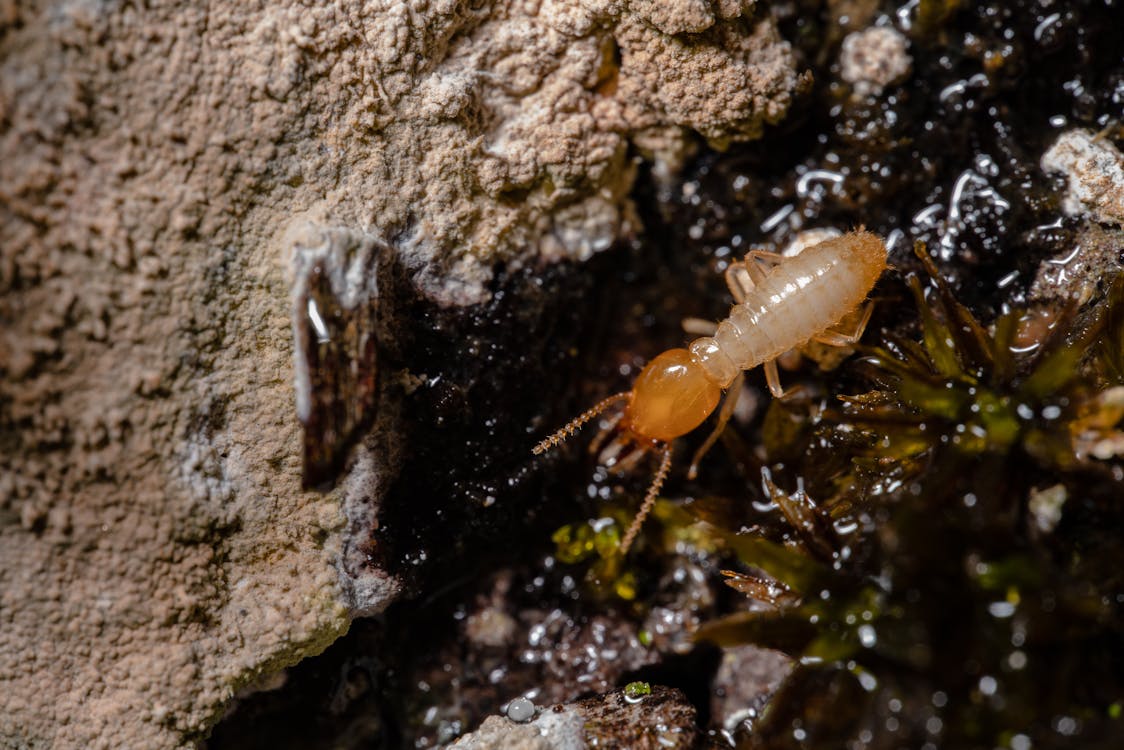Termites are among the most damaging pests because of the destruction they can cause to your home. The infestation of these pests can ruin your home, furniture, and anything else made of wood. Without proper prevention and treatment, termites can cause severe structural damage that can be quite expensive to restore.
Hence, preventative measures against termite infestations are crucial. In this article, we will discuss several permanent termite prevention methods that will keep your home or business free from these pests.
We’ll go over everything you need to know, from DIY solutions to hiring a professional pest control service, to keep your house safe from termites. Let’s jump in and learn some effective termite-prevention techniques!

Termites: What is It?
Little, white insects called termites eat wood and other organic matter. Their destructive power is so great that they are often called “silent destroyers” since their destruction isn’t always discovered until it’s too late. Termites have a complex social structure that divides members of the colony into workers, soldiers, and reproducers.
In addition to wood, cellulose-containing products like paper and cardboard also attract termites. By fermenting the cellulose into easily digestible sugars, they get their nutrition from these sources. Termites can wreak havoc on anything made of wood, from furniture and flooring to the framing of homes and other buildings.
Subterranean termites, dry wood termites, and damp wood termites are the most prevalent forms of termites in the United States. As a result of their traits and habits, different species of termites do different amounts of damage to buildings. The best strategy for eliminating a termite infestation depends on knowing what kind of infestation you’re dealing with.
How Do You Prevent TermitesPermanently?
Permanently preventing termites involves a mix of preventative measures and routine maintenance. To keep termites out of your house, consider the following measures and navigate here:
Keep Your Home Dry
Termites thrive in damp environments, so it’s crucial to keep your home dry. Fix any leaks in your plumbing or roof, ensure proper drainage, and use dehumidifiers in damp areas like basements and crawl spaces. Termites are attracted to damp places, so it’s important to keep your home dry.
If your home is damp or has problems with moisture, it can be a great place for termites to live and spread. You can make it less likely that termites will move into your home by fixing any leaks in your plumbing or roof, making sure your home has good drainage and using dehumidifiers in damp areas.
Keeping your home dry will make it less appealing to termites and make it less likely that they will move in.
Remove Any Sources Of Moisture
To stop termite infestations, you must get rid of all sources of water. Termites like moist places, so if your home has water sources, it can make it more likely that termites will move in. Moisture can come from things like standing water, pipes that leak, and water damage.
You can make it less likely that termites will move into your home by getting rid of any standing water, fixing any leaky pipes, and fixing any water damage. To make your home less appealing to termites and less likely to get infested by them, you should get rid of any sources of moisture.
Remove Wooden Debris
Termites are attracted to wooden debris like fallen trees, branches, and stumps. Remove any wooden debris from your yard to reduce the chances of termites infesting your home. To keep termites from coming into your yard, you should get rid of any old wood that is lying around.
Termites like wood, and pieces of wood like fallen trees, branches, and stumps can make a good place for them to live. By getting rid of any wood in your yard, you can make it less likely that termites will move into your home. It’s important to get rid of old wood in your home to make it less appealing to termites and lower the risk of an infestation.
Seal Cracks And Crevices
Termites can enter your home through tiny cracks and crevices. Seal any gaps around windows, doors, and pipes with caulk or foam insulation. To stop termites from getting in, it’s important to seal up cracks and holes. Termites can get into your home through small cracks and gaps around doors, windows, and pipes.
By filling in these cracks with caulk or insulation foam, you can make a barrier that termites can’t get through. Sealing cracks and holes can help keep termites out of your home and make it less likely that they will get in. It’s important to seal any holes in your home to make it less appealing to termites and prevent damage from them.
Use Termite-Resistant Materials
When building or renovating your home, use termite-resistant materials like concrete, steel, and pressure-treated wood. Using materials that are resistant to termites is a good way to stop termite infestations. Materials like concrete, steel, and wood that have been treated with pressure are less likely to be damaged by termites.
Using these materials when building or remodelling your home can make it less likely that termites will move in and protect your home from damage caused by termites. Use materials that are resistant to termites to make your home less appealing to termites and less likely to get an infestation.
Have Regular Termite Inspections
Having regular termite inspections is an important step to prevent termite infestations. Termite inspections can detect any signs of termite activity or damage early before it becomes a serious problem. A professional inspector can identify areas of your home that may be at risk for termites and recommend preventive measures to reduce the likelihood of infestations.
Regular termite inspections can also help you catch any termite activity early, which can save you money on repairs and prevent serious damage to your home. It’s important to have regular termite inspections to protect your home from termite damage and catch any potential infestations early.
Hire A Professional Pest Control Service
Protect your home from termites by using the services of a professional pest control company. Professionals in the pest treatment industry are trained to spot potential termite entry points in your home and advise you on how to seal them off.
They are also able to apply efficient termite management tactics, which will rid your house of any existing infestations and prevent further termite damage.
Bait stations, soil treatments, and fumigation are just some of the methods used by pest management companies to reduce and eventually eliminate termite populations. Furthermore, they can offer maintenance and monitoring services to keep pests at bay.
When you use a professional pest control service, you can rest easy knowing that your house is safe from termite invasion. If you want the best service and protection for your house, hire a reliable and professional pest control firm.
Conclusion
Termite infestations can be avoided with the use of a mixture of preventative measures. Effective preventative methods include maintaining a constant, dry environment inside the home, eliminating all potential sources of moisture, clearing away any discarded wood, and sealing any gaps or fissures.
You may prevent further damage to your house from termites by having regular termite inspections performed and by employing a professional pest control service. Protect your house from costly termite repairs by following these actions to lessen the chances of an infestation.
